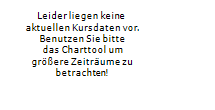
NEW YORK, NY / ACCESSWIRE / October 22, 2024 / Businesses worldwide are increasingly aware of the growing cyberthreats targeting email communications, making it crucial to protect against phishing, email spoofing, and malware. One essential tool in this effort is DomainKeys Identified Mail (DKIM), which helps ensure email authenticity and integrity. This article explains how DKIM works, its benefits for businesses, and the steps needed for successful implementation.
What is DKIM?
DomainKeys Identified Mail (DKIM) is an email authentication protocol that detects email spoofing by allowing the recipient to verify if an email was sent and authorized by the domain owner. DKIM uses cryptographic signatures embedded within email headers, ensuring both the authenticity of the sender and the integrity of the email content.
Essentially, DKIM serves two purposes:
Authentication: Verifies that the email is from an authorized source.
Integrity: Ensures the content hasn't been tampered with during transmission.
How DKIM Works
DKIM relies on public and private key pairs for email authentication. Here's a simplified breakdown:
1. Signing the Email: When a business sends an email, the mail server adds a DKIM signature to the header. This signature is generated using the private key stored securely by the domain owner and includes a hash of the email content and metadata.
2. Publishing the Public Key: The public key is published in the domain's DNS record, allowing recipient mail servers to verify the signature.
3. Verifying the Signature: When the recipient's server receives the email, it retrieves the public key from DNS and uses it to validate the signature. If it matches, the email is authenticated, confirming its source and integrity.
Steps to Implement DKIM
Deploying DKIM may seem technical, but with the right approach, it's manageable. Here's a simplified guide:
1. Check if Your Email Provider Supports DKIM: Most major email service providers, such as Google Workspace and Microsoft 365, support DKIM. If your provider doesn't, you might need to switch or manually set up DKIM.
2. Generate a Key Pair: Create a public and private key pair. The private key is stored on your mail server and is used to sign outgoing emails, while the public key is added to the DNS records of your domain.
3. Publish the DKIM Public Key in DNS: Create a new DNS TXT record for your domain where the public key will be stored. This allows recipient servers to retrieve and verify the email signature.
4. Configure Your Mail Server: Ensure your mail server automatically signs outgoing emails using the DKIM signature. The private key is used to generate the signature added to the email header.
5. Test the DKIM Setup: Before full deployment, test the DKIM setup to ensure it's working properly. There are several online tools available for this purpose.
6. Monitor DKIM Reports: Once implemented, regularly monitor DMARC reports (if using DMARC alongside DKIM) to verify how your emails are authenticated by recipient servers.
Common Challenges and Best Practices
Implementing DKIM may come with challenges, but following these best practices can help mitigate potential issues:
1. Key Management: Keep private keys secure and rotate them periodically. Ensure that public keys are updated whenever private keys are changed.
2. Email Forwarding Issues: Email forwarding may cause DKIM signatures to fail due to content alterations. Using DMARC alongside DKIM can help mitigate this issue.
3. DNS Management: Since DKIM relies on DNS records, ensure proper DNS configuration and check for propagation delays that could lead to authentication failures.
4. Combine with SPF and DMARC: For optimal email authentication, use DKIM in combination with SPF (which verifies the sending server's IP) and DMARC (which specifies how to handle failed authentication attempts). Together, these protocols form a comprehensive email security strategy.
Conclusion
As email remains a vital communication tool, securing it from threats like phishing and spoofing is essential. DKIM offers a powerful solution for improving email security by ensuring authenticity and integrity. By implementing DKIM alongside SPF and DMARC, businesses can significantly reduce their vulnerability to email-based attacks, enhancing customer trust and ensuring safe, reliable communication.
By making DKIM part of your email security strategy, you can protect your organization from cyberthreats, improve email deliverability, and maintain industry-standard practices for email communication.
CONTACT:
Sonakshi Murze
Manager
sonakshi.murze@iquanti.com
SOURCE: Mimecast
View the original press release on accesswire.com

